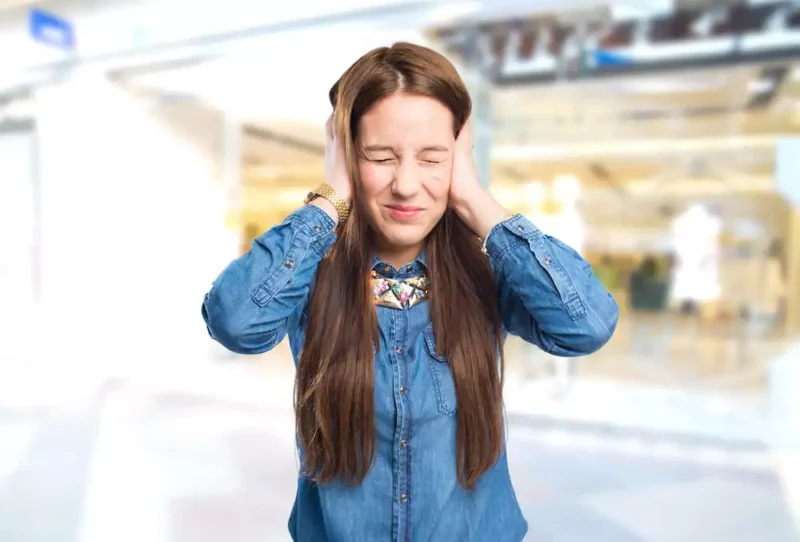Adolescent Panic Attacks: Causes, Symptoms, Treatment

In Europe over 3% of the population suffers from panic attacks on a daily basis — in the United States, that number increases to 11%. And, according to studies, those metrics are increasing each year. These types of attacks begin more often in puberty or early adulthood when the body is being subjected to extreme changes – not only environmental but physical. It’s important to understand what panic attacks are, how they are treated, and why panic disorder in a teenager is a major health crisis right now.
What is a panic attack?
Panic attacks are a sudden surge of intense fear or apprehension. They are also known as anxiety attacks. A panic attack can be described as an explosion of intense emotion, in most cases fear and discomfort, that reaches its peak within 10 minutes and then subsides over the next several hours. Most attacks of this nature last roughly 30 minutes. Panic attacks are often accompanied by physical symptoms, such as shaking, shortness of breath, and chest pain.
Panic attacks are not life-threatening and do not represent a mental illness. They may be triggered by stress, but they can also be brought on by certain medications, drugs, or stimulants – such as caffeine -, or even exercise. Panic attacks are characterized by several physical symptoms including shortness of breath, chest pain and a racing heart, feelings of being disconnected from oneself, and intense fear that something terrible is about to happen.

The essential characteristics of adolescent panic attacks have remained unchanged since being conceptualized in the DMS-IV. Panic attacks function as a symptom of a disorder or illness — and in many cases, due to the fact that they are a form of “warming system” they can be beneficial to doctors since they point out an underlying cause. From panic disorder to social anxiety disorder all the way to depression and even medical problems.
Frequently asked questions regarding panic attacks in teenagers
According to the NIMH, over 2.3% of adolescents suffer from panic disorder and are constantly assailed by panic attacks. That’s about 3 million teens that will have a panic attack in their lifetime. It’s important to understand a bit about these flair-ups — not only what their most common symptoms are, but how to treat them, and the possible causes of them.
What are the symptoms of a panic attack in a teenager?
A panic attack is a sudden episode of intense fear or discomfort that reaches its peak within minutes.
The most common symptoms are:
chest pain;
shortness of breath;
heart palpitations;
dizziness or lightheadedness;
choking feeling;
nausea or stomach ache;
sweating or clamminess;
feeling detached from oneself, unreal, or out of control.
People that have suffered from adolescent panic attacks have reported harrowing experiences. They have often said that in many cases it feels like they’re being chased — they fear for their lives and in many instances that fear causes flashing vision and other visual disturbances.

How to calm a teenager during a panic attack?
It is important to first make sure that the child is in a safe environment. Remove any potential hazards from their surroundings and remove any objects that might be used as weapons. Next, reassure the child that they are safe and help them to slow down their breathing. Help them to focus on a calm thought or activity, such as listening to music or reading a book.
Other cues, that help during this time are:
Physical touch;
encouraging them to move and stretch out;
reassuring them you won’t leave;
constantly telling them they’re safe;
a mantra – said over and over again – such as “this feels terrible but it’s not going to hurt me.”
How to diagnose and treat panic attacks in adolescents?
The most practical way of diagnosing a possible panic attack in adolescents is to watch for symptoms. There are screening tools, such as Panic Disorder Severity Scales, that can be used by professionals to detect these types of attacks.
How to treat panic disorder in teenagers
Treatments for panic disorder in a teenager include a variety of interventions, including physiological therapies, cognitive-behavioral therapies, and even medication — like selective serotonin reuptake inhibitors.
In many cases, the teenager might have to change certain habits — such as caffeine intake, and increase their exercise routine – since the former induces endorphins which combat the stress hormone cortisol. They can also take on breathing exercises, and seek weekly therapeutic help.

What is the prognosis for adolescents with panic attacks?
Over 70% of teenagers that treat their panic attacks, or the underlying cause, can in fact mitigate most of the symptoms. They can grow up to either not have any panic attacks, or experience limited symptoms attacks — the latter a much less comprehensive flair-up with fewer symptoms.
Nevertheless, it should be noted that 30% of most teenagers are treatment resistant. These people will continue to experience panic attacks and panic disorders throughout their lives.
Preventing panic attacks in teenagers
There’s no surefire way of preventing adolescent panic attacks — there is still much to uncover about them, to the point that some scientists and geneticists consider that some people – at a genome level – are more anxious and prone to these types of attacks. The best way to mitigate the possibility of a panic attack is to help your child, at an early age, to cope with stress and panic – help them avoid and understand how to react to triggers and stressful situations.